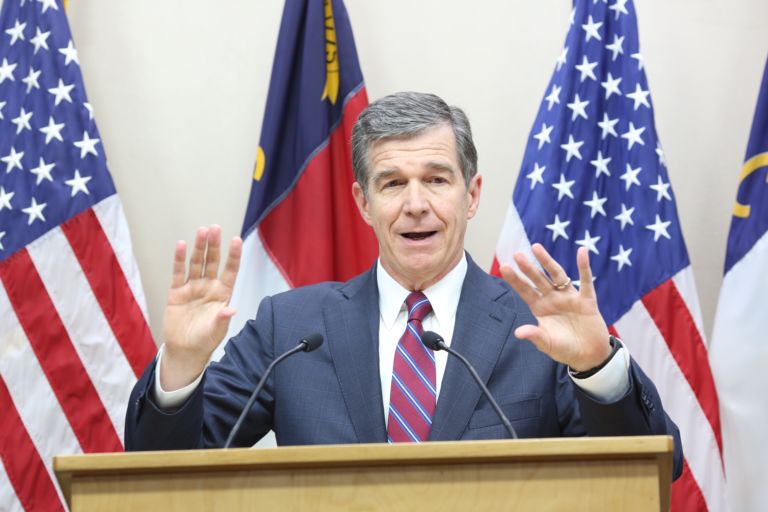The North Carolina Department of Public Instruction staff will present the Annual Report on The State of the Teaching Profession to the State Board of Education meeting this week. The report gets a lot of attention because public school advocacy organizations and teacher unions claim that educator attrition data indicate the health of the teaching profession. If that is the case, then they should be pleased that the rate continues to drop.
According to the draft report, the statewide teacher attrition rate last school year was virtually unchanged compared with the previous year’s rate. Overall, 7.53% of school district teachers left the profession between March 2019 and March 2020. That was just a hair lower than the 7.59% rate in 2018-2019 and significantly lower than the 8.09% attrition rate in 2017-2018. Since the first year of the redesigned report, the attrition rate has fallen by 1.51 percentage points (see table).
Statewide Teacher Attrition Rate, 2016–2020
| School Year | Attrition Rate |
| 2015-16 | 9.04% |
| 2016-17 | 8.70% |
| 2017-18 | 8.09% |
| 2018-19 | 7.59% |
| 2019-20 prelim. | 7.53% |
In addition to attrition and mobility rates, the report provides data outlining the reasons teachers leave the profession. School districts place each self-reported reason into one of 23 categories. While this information may not capture the complexities of teachers’ decision to resign or teach at another public school, it does provide a framework for policymakers seeking to strengthen the state’s teacher recruitment and retention efforts.
Of the 7,111 public school teachers who resigned last year, 28% reported that they retired with partial or full benefits. Nearly 24% of teachers resigned because they were dissatisfied with teaching, desired a career change, or accepted a position in another state. Those who resigned due to family responsibilities or relocation accounted for another 18.5% of the total. Very few school districts compel educators to leave the profession. Only a few hundred teachers are dismissed or not hired after their probationary or interim contract expires.
Legislators and education officials may be able to craft policies that convince some educators to delay retirement or remain in the state to teach, depending on the circumstances of those decisions. On the other hand, little could be done to retain teachers that simply dislike the work or have family commitments that force them to resign. That is one reason why simplistic policy proposals, such as across-the-board teacher raises or restoration of master’s degree supplemental pay, likely would have a negligible effect on the teacher turnover rate.
Another reason why one-size-fits-all solutions may have limited success is that attrition varies by district and region. Districts in the northeast have the highest attrition rates. In 2020, around one in five teachers resigned from the Northampton County Schools. Northampton’s 21.8% attrition rate was the highest in the state. In contrast, districts in the western region have negligible turnover. Mitchell County Schools had the lowest attrition rate in the state, with just 2.9% leaving the district during the school year. Financial and employment incentives targeted to high attrition and low performing districts make the most sense.
The role of COVID-19
As mentioned above, the NC Department of Public Instruction collects teacher attrition and mobility data each March. Gov. Roy Cooper issued his initial school closure order on March 14, so I suspect that any coronavirus-related attrition occurred in the months following the initial order. As such, the 2019-2020 data probably do not capture resignation decisions made in the thick of coronavirus shutdowns.
But I do not expect attrition rates to spike next year. While the migration to remote learning and the difficulties associated with it are not ideal, the inhospitable labor market produced by the Cooper-ordered shutdowns likely deterred teachers from pursuing employment in another sector. Moreover, the Republican-led General Assembly approved legislation that held school district finances harmless for the current year, thereby ensuring that districts would have the resources necessary to retain teachers that might have otherwise been laid off due to revenue losses from declining enrollment.
Finally, school districts appeared to be responsive to the needs of educators. District officials supported the mass migration to remote learning from mid-March to June. Since the start of the new school year in August, district and school administrators have implemented sensible health and safety measures designed to protect teachers, particularly those who are immunocompromised or have preexisting respiratory conditions.
In the end, we should be pleased that the statewide teacher attrition rate is dropping. In addition to avoiding the various financial and educational costs associated with teacher turnover, it suggests that the investments made by the Republican-led General Assembly are beginning to pay off.


